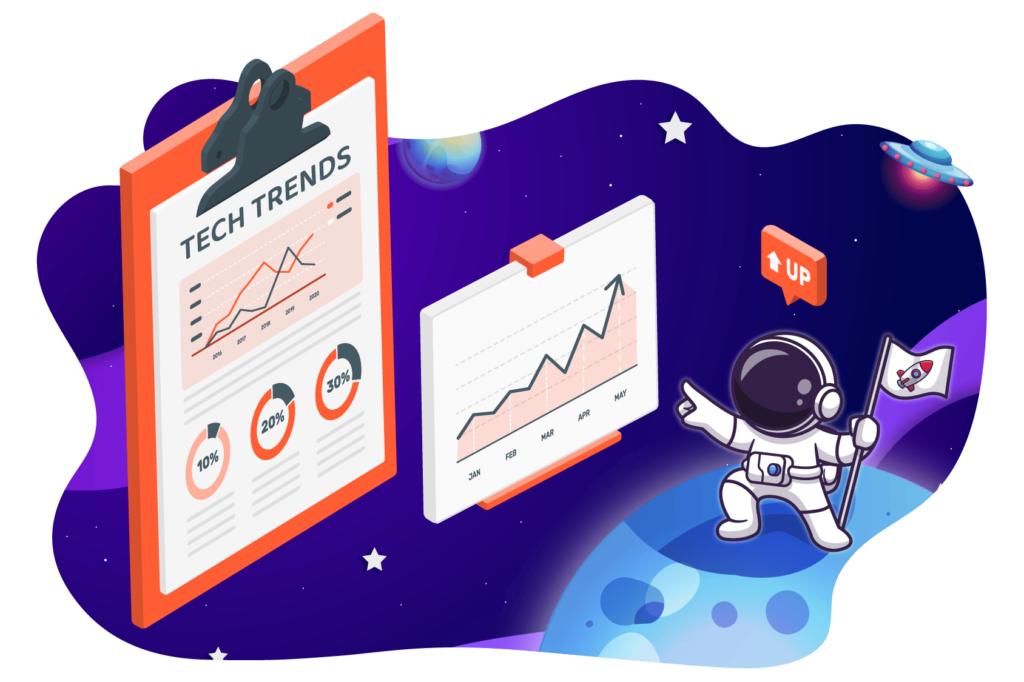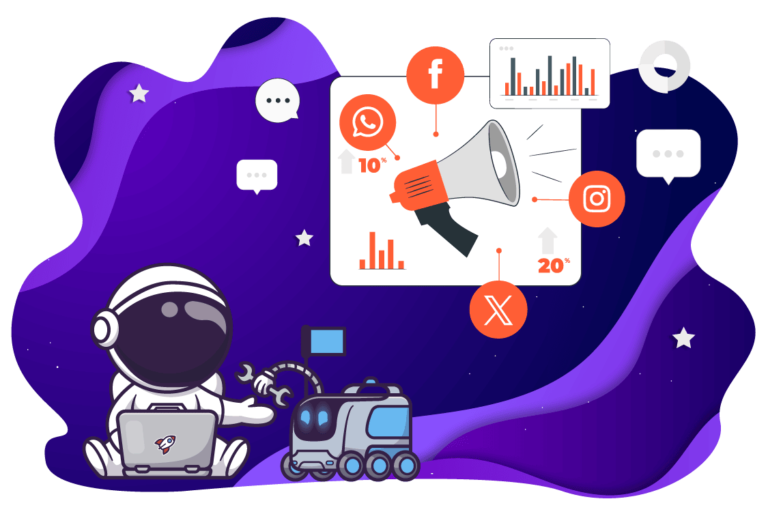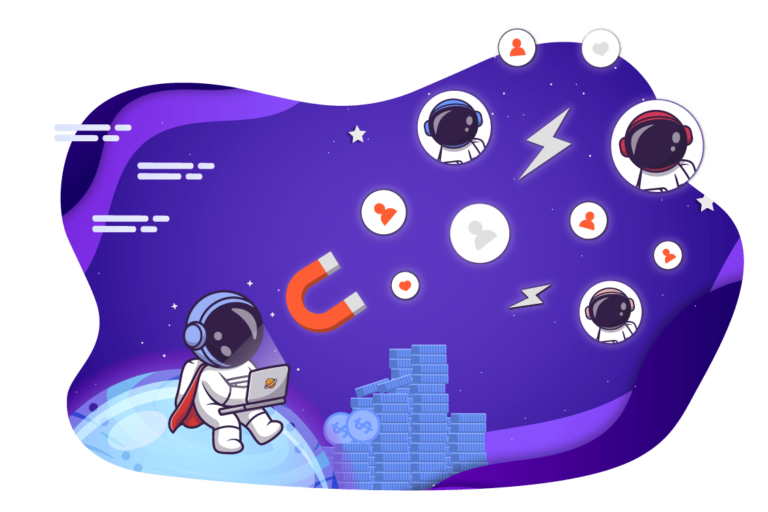What is Technology all about?
Tech has been a part of human lives for a long time, even before there was an official term for it. Technology is merely the knowledge and application of skills that help us in the creation of new products or services which will in turn fulfil our particular needs. By nature, technology is inventive. In fact, one of the earliest applications of technology was the invention of the wheel, which has revolutionised going from one place to another for us.
Be it the invention of the steam engine, the harnessing of electricity or the rise of the internet, all of these technological inventions have propelled humanity forward. Focused around creation and growth, the tech industry can be broken down into various sectors like networking, software, hardware, internet and so on.
Even today, technology continues to be a catalyst for change in the world and it gives businesses the opportunity to invent, reinvent and contribute to the overall welfare of human beings. In this blog post, we will take a look at the most significant technology trends that are unfolding today.
Top Technology Trends
1. Next-level process automation and virtualisation
Robotics, the Industrial Internet of Things (IIoT), digital twins, and 3-D or 4-D printing are combining to streamline routine tasks and to improve operational efficiency.
By 2025, it is predicted that more than 50 billion devices will be connected to the IIoT, generating 79.4 zettabytes of data yearly. Annual installations of industrial robots, which have increased two times to about 450,000 since 2015, will grow to about 600,000 by 2022.
It is also predicted that 10 percent of today’s manufacturing processes will be automated by 2030.
This basically means that 50 percent of our current work activities can be replaced with next-level process automation and virtualisation, which will in turn lead to massive changes in the labour industry and the future of work. As machines will take over basic cognitive tasks, the focus will shift towards the social, emotional and technical skills needed.
For example, a big manufacturer used robots mounted on automated vehicles to load pallets.
2. The Future of Connectivity
The combination of fifth generation (5G) broadband cellular networks and Internet of Things (IoT) will enable faster connectivity across much longer distances. Greater network capability will in turn lead to great shifts in the business landscape, be it decentralised energy delivery or even remote patient monitoring.
Seamless connectivity can lead to the creation of new services and business models linked to sensor-enabled products, provide value-added offerings like predictive services and also create the potential for companies to personalise offerings across different channels in order to improve their customer service.
3. Next-Generation Computing
Quantum computing and Neuromorphic computing are also rapidly rising and the latter deals with the development of specialised microchips called Application-Specific Integrated Circuits or ASICs. Next Generation Computing can unlock unprecedented potential for businesses.
Next Generation Computing further democratises AI-driven services and lower barriers of entry across industries.
4. Applied Artificial Intelligence
Artificial Intelligence algorithms can train machines to recognise patterns and to interact with them, thus helping in making sense of real-world data like images, text, videos and audio. This trend can in fact be used to improve customer experience through new customer interfaces and interaction methods. This technology can also make human-machine interactions more seamless by translating speeches and images into machine-readable instructions.
It is estimated that by 2024, around 50 percent of user experiences will be augmented by AI-driven speech and computer vision algorithms. For example, it can give customers in retail a 360 degree in-store experience with virtual assistants and product exploration tools.
5. Software 2.0
Software 2.0 is on the rise as well where programmers are replaced by neural networks which in turn utilise machine learning for software development. This will help organisations in automating their mundane programming tasks and disrupt research and development through next-generation simulations. Coming to examples, an automotive company leveraged Software 2.0 driven artificial intelligence to deliver 800,000 autopilot cars that in turn collect data that helps in continually improving their AI.
6. Touch Commerce
Touchscreen technology with one-click shopping allows consumers to buy easily from their phones, making the shopping experience much more relaxed and enjoyable. After linking their payment information to a general account, customers are able to shop for everything, from clothes to accessories with just their fingerprints. This is in fact one of the biggest things to hit the E-Commerce industry this year and purchases of this type are expected to increase by a whopping 150 percent in the coming year.
7. Virtual Reality (VR)
Virtual Reality has been around for a couple of years now but until recently, it had its limitations. Virtual Reality can now provide a fully immersive digital experience that users wanted for a long time, thanks to changes in both hardware and programming. The effects of this change is going to be felt across industries, from education to retail. Virtual Reality has been massively used in the gaming industry for a long time and this trend is likely to continue and expand over the next few years. Additionally, VR can also help companies scale their sales and marketing efforts by actively engaging with their customers. The number of brands joining metaverse is a testament to the fact that traditional marketing is about to go for a toss soon. Unlike anything that has been possible before, the metaverse allows brands to have their virtual world where they can actively engage and interact with the customers.
8. Digital Transactions
As cryptocurrency gets credibility and alternate digital payment systems like Google Pay and Amazon Pay grow, traditional banking will inevitably lose its ground. Businesses are already making changes to accommodate this shift by growing its digital transaction sources. For example, even multinational investment banks like the Bank of America are gathering several blockchain patents.
Technology & Sales
With the rise of technology, many business processes are undergoing digital transformation. Technology, for example, disrupting sales prospecting by several methods such as:
- Automated Lead Scoring: With a lead scoring software, one can define the criteria to be used for scoring and determine the thresholds to kickstart marketing campaigns. More emphasis is given to users’ online activity, thereby enabling more relevant and accurate campaign messages, leading to more efficient conversions.
- Route Mapping: Salespeople often cannot afford to waste time between calls, especially when they are hitting the road for visiting established customers and prospects. Some prospecting apps allow businesses to plot the nearest prospects and customers in the database on one map. This helps the sales representatives in filling the gap in schedules usually brought about by last-minute cancellations.
Threats in the Tech Industry
While globalisation and connectivity have provided a plethora of advantages, it has also brought about more risks. Cyber attacks are on the rise and to combat it, every company should be having strong antivirus software, firewalls and data encryption.
If you still want to reach your prospects’ inboxes amidst the host of firewalls and spam and junk filters, you can try Lodago.
Lodago helps you circumvent the various spam/junk filters and firewalls and make sure that your emails are reaching your prospects’ inboxes. Our tool embeds your calendar, letting clients book meetings directly inside emails with a single click!
Tech companies are rather in a vulnerable position in 2022 as new disruptive technologies are emerging every now and then which can render their business model outdated at any time. Cyber security threats are increasing and chip shortages are also very evident due to a series of unfortunate events like the pandemic, trade wars and unpredictable natural events, such that the demand for semiconductors far outweighs the production. This disproportionately affects the tech industry, which is heavily reliant on these chips. Tech companies have to look for alternative supply chains, but it is incredibly hard when Taiwan’s TSMC accounts for 53 percent of global semiconductor production.
Taking critical action against these threats is therefore crucial for these companies.
With new technology trends in 2023 will come both unprecedented innovation and intricate connectivity, and as such businesses need to respect ethical lines of consumer data breach.
As per a Statista report, the AI software market will contribute over 125 billion US dollars to the global economy by 2025.
In 2023, therefore, businesses should come together not only to ensure an ecosystem that is cyber-secure, but also to review their take on analytics. The staff therefore needs to be well-trained for the latest trends in technology. We can then expect to catch a sight of a more technologically advanced world.








